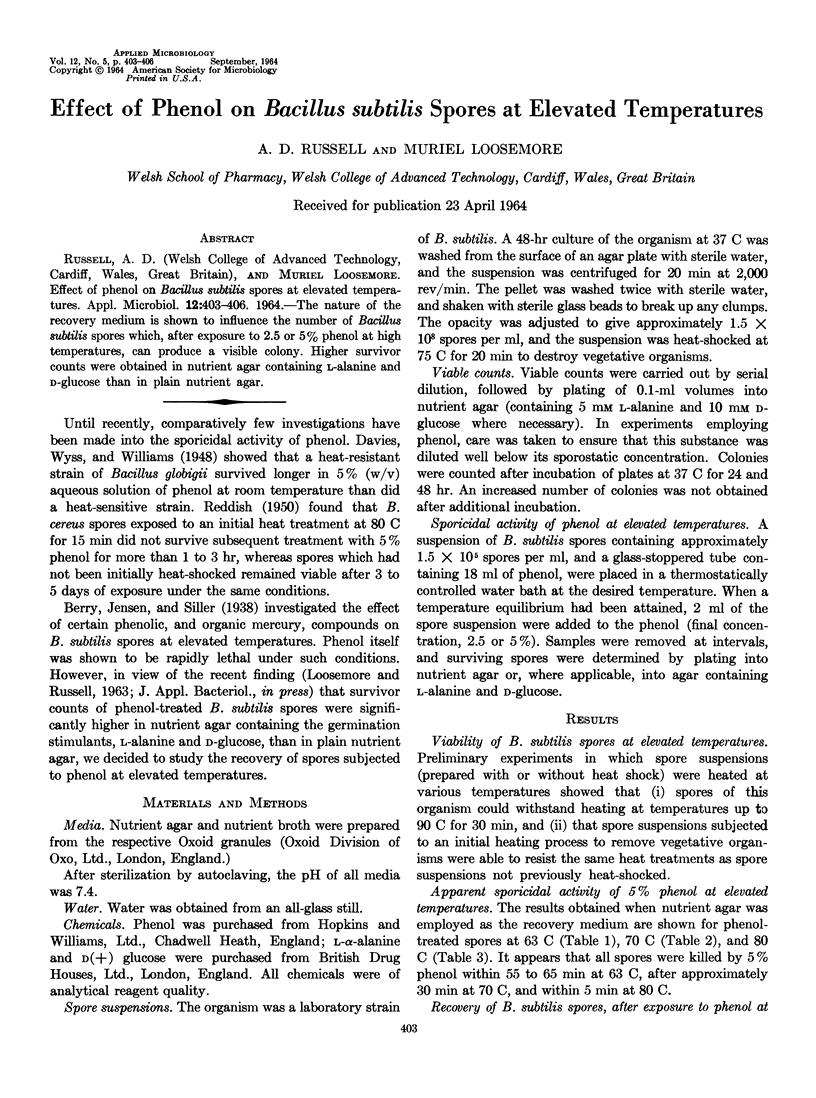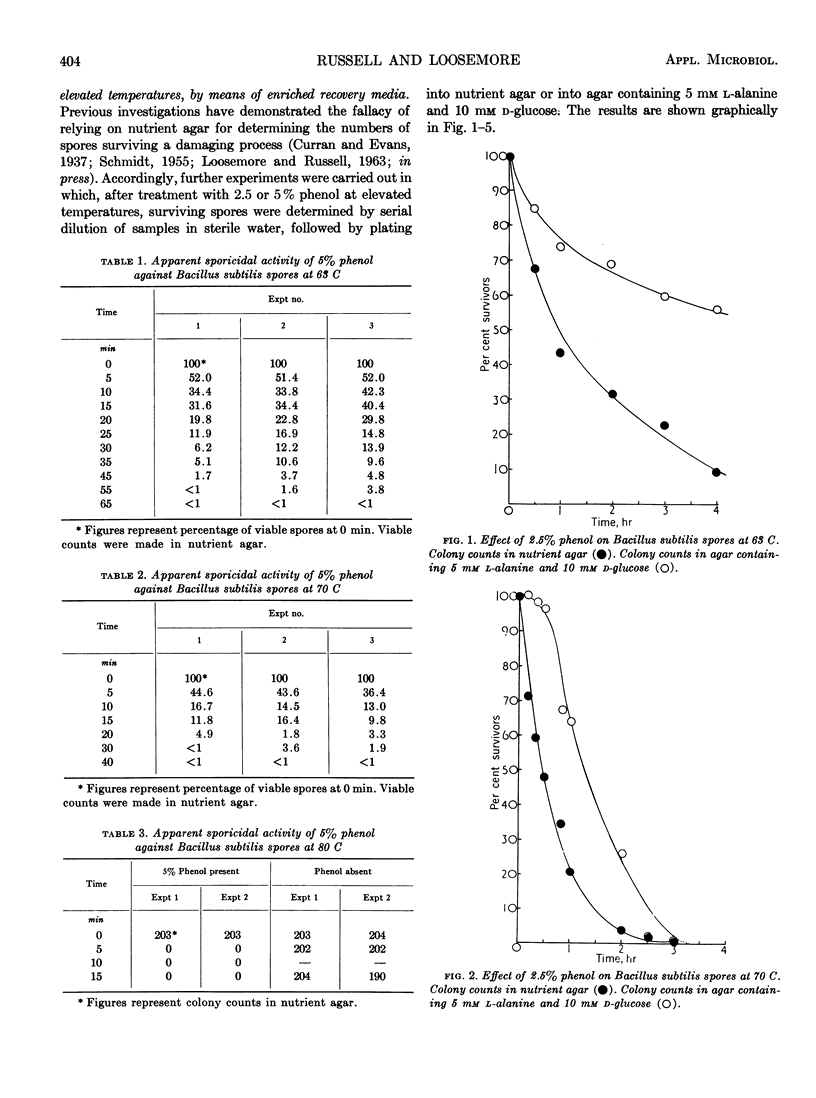Abstract
The nature of the recovery medium is shown to influence the number of Bacillus subtilis spores which, after exposure to 2.5 or 5% phenol at high temperatures, can produce a visible colony. Higher survivor counts were obtained in nutrient agar containing L-alanine and D-glucose than in plain nutrient agar.
Full text
PDF



Selected References
These references are in PubMed. This may not be the complete list of references from this article.
- Davis F. L., Wyss O., Williams O. B. Studies on Heat Resistance: II. Comparison of Resistance to Heat with Resistance to Disinfectants. J Bacteriol. 1948 Nov;56(5):561–567. [PMC free article] [PubMed] [Google Scholar]
- LOOSEMORE M., RUSSELL A. D. THE SPORICIDAL ACTIVITY OF PHENOL. J Pharm Pharmacol. 1963 Aug;15:558–558. doi: 10.1111/j.2042-7158.1963.tb12835.x. [DOI] [PubMed] [Google Scholar]
- SCHMIDT C. F. The resistance of bacterial spores with reference to spore germination and its inhibition. Annu Rev Microbiol. 1955;9:387–400. doi: 10.1146/annurev.mi.09.100155.002131. [DOI] [PubMed] [Google Scholar]


